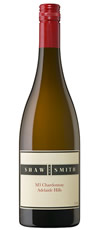 High expectations can be a curse. I was chomping at the bit to get a look at the new Shaw + Smith M3 Chardonnay. A hyped vintage and some early critical acclaim seemed to indicate that this may indeed be something special. And look, it’s a very good wine no doubt…but it failed to generate the excitement I was hoping for. Of course, that’s as much my issue as it is the wine’s.
High expectations can be a curse. I was chomping at the bit to get a look at the new Shaw + Smith M3 Chardonnay. A hyped vintage and some early critical acclaim seemed to indicate that this may indeed be something special. And look, it’s a very good wine no doubt…but it failed to generate the excitement I was hoping for. Of course, that’s as much my issue as it is the wine’s.
Tightly wound citrus and nectarine, grapefruit pith and nuts. It strikes a lovely balance between precision and texture and its certainly amply structured. I don’t remember the whole bunch grip being as pronounced on the back palate in previous vintages but it works well. Lemon, spice and almond linger along with a faint hint of sage. Intensity, penetration and length are its calling cards – all within a modern, lean framework. Yet there’s a slightly sour, almost green character that attaches itself to the acid and mineral spine, distracting and detracting from the other wealth of positives. It may just be that it’s too young. Only time will tell. Very Good
Region: Adelaide Hills
Alcohol: 13.0%
Closure: Screwcap
Price: $40
Tasted: December 2011

Had exactly the same reaction with the 2009 Cullen Kevin John Chardonnay. High expectations with a young Chardonnay can indeed be a curse.
Whole bunch grip? Whole bunch pressing produces less phenolic extract
Red – the topic of wine and expectations probably deserves a seperate post. Hopefully we’ll both get to taste these Chardonnays again when they’ve reached maturity.
Damon – I believe destemming has the potential to liberate certain harsher, more bitter phenolic components…but I was referring to the sensory presence of “stalky/stemmy” phenolics/tannins – a phenomenological observation that has little to do with the issue of less or more phenolic extract.
Are you proposing though that these are related to whole bunch pressing? Id like to know your other observations of this?
I’m not really proposing anything Damon. Sorry.